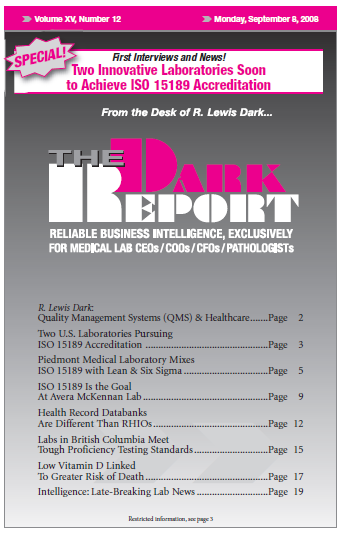CEO SUMMARY: Facing a crisis due to several highly publicized deficiencies in lab testing, pathologists in Canada are using proficiency testing (PT) to improve standards. In British Columbia, PT is mandatory and every lab is evaluated every quarter. Pathologists in BC recommend that every province and territory adopt mandatory proficiency testing. Currently only British Columbia …
Labs in British Columbia Meet Tough PT Standards Read More »
To access this post, you must purchase The Dark Report.


